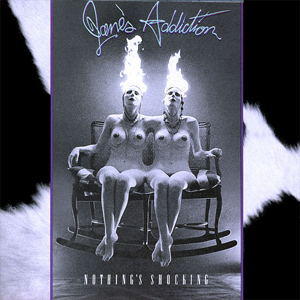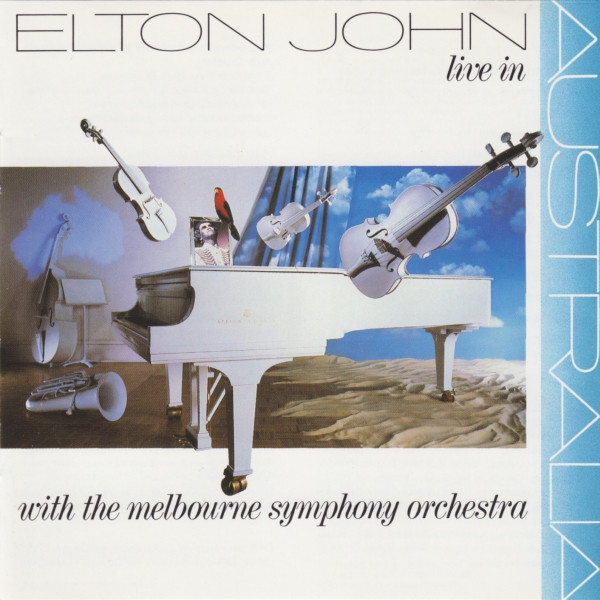 Considering how long they’d generally taken to make their albums even when they were more relevant, nobody was really expecting much from Tears For Fears, especially considering how tiny a splash their first reunion made. But they were able to keep in the public’s mind through touring, and deluxe expanded repackages of their ‘80s albums; meanwhile Curt Smith released two more solo albums. Even when they spoke of writing new material, people weren’t cancelling dinner plans. And frankly, “I Love You But I’m Lost”, one of two new songs added to the 2017 Rule The World compilation, was mostly of appeal to diehard nostalgists and Pet Shop Boys fans. (The other was “Stay”, and will be discussed shortly.)
Considering how long they’d generally taken to make their albums even when they were more relevant, nobody was really expecting much from Tears For Fears, especially considering how tiny a splash their first reunion made. But they were able to keep in the public’s mind through touring, and deluxe expanded repackages of their ‘80s albums; meanwhile Curt Smith released two more solo albums. Even when they spoke of writing new material, people weren’t cancelling dinner plans. And frankly, “I Love You But I’m Lost”, one of two new songs added to the 2017 Rule The World compilation, was mostly of appeal to diehard nostalgists and Pet Shop Boys fans. (The other was “Stay”, and will be discussed shortly.) Yet when The Tipping Point finally appeared after even more delays, the media received it like a gift, with the boys making the rounds of the talk shows, speaking openly about their own professional difficulties and personal travails. Curt looked as chiseled as ever, while Roland Orzabal embraced his own silver mane and beard. Aging and mortality were the main topics among the songs, many of which were collaborations with Charlton Pettus, who produced the last album, and hit songwriter Sacha Skarbek.
The simple acoustic strum of “No Small Thing” is proof right away that they’d evolved. A mention of New Mexico suggests a south-of-the-border influence, but another rhythm comes in to take it somewhere else entirely, escalating toward a frantic and sudden end. The title track eases its way in until hitting tempo with a drum track that sounds exactly like it was lifted from “Everybody Wants To Rule The World”, whereupon it gets very busy and doesn’t let up. It’s easy to read into the lyrics of “Long, Long, Long Time”, but the changing meters keep you guessing in the meantime. “Break The Man” was written by Curt and Pettus—without Roland—and is straightforward pop without too much decoration, in contrast to “My Demons”, an excellent lyric tethered to a robotic mix.
“Rivers Of Mercy” is much more gentle than anything we’ve heard yet, with gospel touches addressing the worldwide turmoil of 2020. “Please Be Happy” is unique in their catalog as it addresses someone else’s pain and suffering, as opposed to their own or that of the world at large. With horns and subtle orchestral touches, it’s quite lovely. By the time “Master Plan” arrives with its overt Beatle references, it’s welcome, and nicely sets up the catchy, raspy soul of “End Of Night”. Finally, “Stay” sounds wonderful in the context of the album, moreso than it did as a carrot on a hits collection. The other song written by just Curt with Pettus, it was directly inspired by his own doubts about continuing with the band, and nicely caps a strong second side.
While we’re still partial to earlier albums, The Tipping Point does succeed with its breadth of style. Keeping mostly away from the Beatles and Brian Wilson playbooks certainly helped, as did keeping it down to a manageable LP length.
Of course, as had become an annoying trend among “legacy” artists, the album was released by retailers in different territories with exclusive bonus tracks, with all included on a very limited deluxe edition. “Secret Location” is a sop for those who want to dance: “Let It All Evolve” is more tense, based around acoustic chords and a drone, but with a decent chorus; “Shame (Cry Heaven)” has a lovely stark piano beginning, but soon detours into plastic soul and an ill-advised tempo change. They are merely extras.
Tears For Fears The Tipping Point (2022)—3





